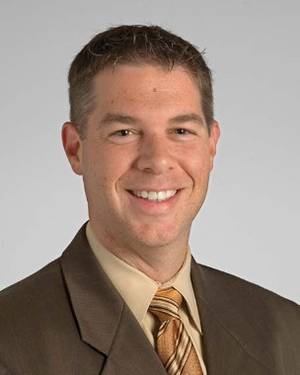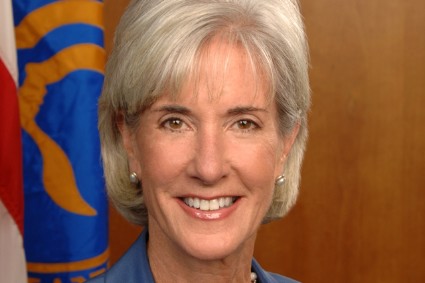User login
Supreme Court Will Decide Contraceptive Coverage Fate in ACA
The Supreme Court is set to decide whether to strike a controversial provision of the Affordable Care Act that requires most employers who provide health insurance to include contraceptive coverage.
The high court announced on Nov. 26 that it has granted writs of certiorari for two cases related to the ACA’s contraception requirement. The court will likely hear oral arguments in the spring of 2014.
The justices will consider arguments related to Sebelius v. Hobby Lobby Stores and Conestoga Wood Specialties Corp. v. Sebelius, which contend that the controversial ACA provision violates the constitution and the Religious Freedom Restoration Act by requiring business owners to provide contraception coverage in violation of their own religious beliefs.
According to a statement from the White House, "earlier this year, the Obama Administration asked the Supreme Court to consider a legal challenge to the health care law’s requirement that for-profit corporations include birth control coverage in insurance available to their employees. We believe this requirement is lawful and essential to women’s health and are confident the Supreme Court will agree."
In rules from the Health and Human Services department, the administration exempted churches and other religious institutions from the coverage requirement.
The American College of Obstetricians and Gynecologists reiterated its support of the ACA’s contraception coverage requirement following the Supreme Court’s announcement.
"A woman’s insurance coverage for contraception or other health care should not be determined by the personal or religious beliefs of the company’s owners," according to a statement from the college. "Decisions about medical care should be solely between a woman and her physician, with no involvement from her boss."
But antiabortion groups such as the Susan B. Anthony List applauded the Supreme Court’s decision to hear the cases, calling this a "fundamental freedom of religion and conscience" issue.
Under the ACA, health plans are required to cover a range of preventive services for women at no cost to patients, including all Food and Drug Administration–approved contraceptive methods, sterilization procedures, and patient education and counseling for all women of reproductive age.
On Twitter @MaryEllenNY
The Supreme Court is set to decide whether to strike a controversial provision of the Affordable Care Act that requires most employers who provide health insurance to include contraceptive coverage.
The high court announced on Nov. 26 that it has granted writs of certiorari for two cases related to the ACA’s contraception requirement. The court will likely hear oral arguments in the spring of 2014.
The justices will consider arguments related to Sebelius v. Hobby Lobby Stores and Conestoga Wood Specialties Corp. v. Sebelius, which contend that the controversial ACA provision violates the constitution and the Religious Freedom Restoration Act by requiring business owners to provide contraception coverage in violation of their own religious beliefs.
According to a statement from the White House, "earlier this year, the Obama Administration asked the Supreme Court to consider a legal challenge to the health care law’s requirement that for-profit corporations include birth control coverage in insurance available to their employees. We believe this requirement is lawful and essential to women’s health and are confident the Supreme Court will agree."
In rules from the Health and Human Services department, the administration exempted churches and other religious institutions from the coverage requirement.
The American College of Obstetricians and Gynecologists reiterated its support of the ACA’s contraception coverage requirement following the Supreme Court’s announcement.
"A woman’s insurance coverage for contraception or other health care should not be determined by the personal or religious beliefs of the company’s owners," according to a statement from the college. "Decisions about medical care should be solely between a woman and her physician, with no involvement from her boss."
But antiabortion groups such as the Susan B. Anthony List applauded the Supreme Court’s decision to hear the cases, calling this a "fundamental freedom of religion and conscience" issue.
Under the ACA, health plans are required to cover a range of preventive services for women at no cost to patients, including all Food and Drug Administration–approved contraceptive methods, sterilization procedures, and patient education and counseling for all women of reproductive age.
On Twitter @MaryEllenNY
The Supreme Court is set to decide whether to strike a controversial provision of the Affordable Care Act that requires most employers who provide health insurance to include contraceptive coverage.
The high court announced on Nov. 26 that it has granted writs of certiorari for two cases related to the ACA’s contraception requirement. The court will likely hear oral arguments in the spring of 2014.
The justices will consider arguments related to Sebelius v. Hobby Lobby Stores and Conestoga Wood Specialties Corp. v. Sebelius, which contend that the controversial ACA provision violates the constitution and the Religious Freedom Restoration Act by requiring business owners to provide contraception coverage in violation of their own religious beliefs.
According to a statement from the White House, "earlier this year, the Obama Administration asked the Supreme Court to consider a legal challenge to the health care law’s requirement that for-profit corporations include birth control coverage in insurance available to their employees. We believe this requirement is lawful and essential to women’s health and are confident the Supreme Court will agree."
In rules from the Health and Human Services department, the administration exempted churches and other religious institutions from the coverage requirement.
The American College of Obstetricians and Gynecologists reiterated its support of the ACA’s contraception coverage requirement following the Supreme Court’s announcement.
"A woman’s insurance coverage for contraception or other health care should not be determined by the personal or religious beliefs of the company’s owners," according to a statement from the college. "Decisions about medical care should be solely between a woman and her physician, with no involvement from her boss."
But antiabortion groups such as the Susan B. Anthony List applauded the Supreme Court’s decision to hear the cases, calling this a "fundamental freedom of religion and conscience" issue.
Under the ACA, health plans are required to cover a range of preventive services for women at no cost to patients, including all Food and Drug Administration–approved contraceptive methods, sterilization procedures, and patient education and counseling for all women of reproductive age.
On Twitter @MaryEllenNY
Supreme Court will decide contraceptive coverage fate in ACA
The Supreme Court is set to decide whether to strike a controversial provision of the Affordable Care Act that requires most employers who provide health insurance to include contraceptive coverage.
The high court announced on Nov. 26 that it has granted writs of certiorari for two cases related to the ACA’s contraception requirement. The court will likely hear oral arguments in the spring of 2014.
The justices will consider arguments related to Sebelius v. Hobby Lobby Stores and Conestoga Wood Specialties Corp. v. Sebelius, which contend that the controversial ACA provision violates the constitution and the Religious Freedom Restoration Act by requiring business owners to provide contraception coverage in violation of their own religious beliefs.
According to a statement from the White House, "earlier this year, the Obama Administration asked the Supreme Court to consider a legal challenge to the health care law’s requirement that for-profit corporations include birth control coverage in insurance available to their employees. We believe this requirement is lawful and essential to women’s health and are confident the Supreme Court will agree."
In rules from the Health and Human Services department, the administration exempted churches and other religious institutions from the coverage requirement.
The American College of Obstetricians and Gynecologists reiterated its support of the ACA’s contraception coverage requirement following the Supreme Court’s announcement.
"A woman’s insurance coverage for contraception or other health care should not be determined by the personal or religious beliefs of the company’s owners," according to a statement from the college. "Decisions about medical care should be solely between a woman and her physician, with no involvement from her boss."
But antiabortion groups such as the Susan B. Anthony List applauded the Supreme Court’s decision to hear the cases, calling this a "fundamental freedom of religion and conscience" issue.
Under the ACA, health plans are required to cover a range of preventive services for women at no cost to patients, including all Food and Drug Administration–approved contraceptive methods, sterilization procedures, and patient education and counseling for all women of reproductive age.
On Twitter @MaryEllenNY
The Supreme Court is set to decide whether to strike a controversial provision of the Affordable Care Act that requires most employers who provide health insurance to include contraceptive coverage.
The high court announced on Nov. 26 that it has granted writs of certiorari for two cases related to the ACA’s contraception requirement. The court will likely hear oral arguments in the spring of 2014.
The justices will consider arguments related to Sebelius v. Hobby Lobby Stores and Conestoga Wood Specialties Corp. v. Sebelius, which contend that the controversial ACA provision violates the constitution and the Religious Freedom Restoration Act by requiring business owners to provide contraception coverage in violation of their own religious beliefs.
According to a statement from the White House, "earlier this year, the Obama Administration asked the Supreme Court to consider a legal challenge to the health care law’s requirement that for-profit corporations include birth control coverage in insurance available to their employees. We believe this requirement is lawful and essential to women’s health and are confident the Supreme Court will agree."
In rules from the Health and Human Services department, the administration exempted churches and other religious institutions from the coverage requirement.
The American College of Obstetricians and Gynecologists reiterated its support of the ACA’s contraception coverage requirement following the Supreme Court’s announcement.
"A woman’s insurance coverage for contraception or other health care should not be determined by the personal or religious beliefs of the company’s owners," according to a statement from the college. "Decisions about medical care should be solely between a woman and her physician, with no involvement from her boss."
But antiabortion groups such as the Susan B. Anthony List applauded the Supreme Court’s decision to hear the cases, calling this a "fundamental freedom of religion and conscience" issue.
Under the ACA, health plans are required to cover a range of preventive services for women at no cost to patients, including all Food and Drug Administration–approved contraceptive methods, sterilization procedures, and patient education and counseling for all women of reproductive age.
On Twitter @MaryEllenNY
The Supreme Court is set to decide whether to strike a controversial provision of the Affordable Care Act that requires most employers who provide health insurance to include contraceptive coverage.
The high court announced on Nov. 26 that it has granted writs of certiorari for two cases related to the ACA’s contraception requirement. The court will likely hear oral arguments in the spring of 2014.
The justices will consider arguments related to Sebelius v. Hobby Lobby Stores and Conestoga Wood Specialties Corp. v. Sebelius, which contend that the controversial ACA provision violates the constitution and the Religious Freedom Restoration Act by requiring business owners to provide contraception coverage in violation of their own religious beliefs.
According to a statement from the White House, "earlier this year, the Obama Administration asked the Supreme Court to consider a legal challenge to the health care law’s requirement that for-profit corporations include birth control coverage in insurance available to their employees. We believe this requirement is lawful and essential to women’s health and are confident the Supreme Court will agree."
In rules from the Health and Human Services department, the administration exempted churches and other religious institutions from the coverage requirement.
The American College of Obstetricians and Gynecologists reiterated its support of the ACA’s contraception coverage requirement following the Supreme Court’s announcement.
"A woman’s insurance coverage for contraception or other health care should not be determined by the personal or religious beliefs of the company’s owners," according to a statement from the college. "Decisions about medical care should be solely between a woman and her physician, with no involvement from her boss."
But antiabortion groups such as the Susan B. Anthony List applauded the Supreme Court’s decision to hear the cases, calling this a "fundamental freedom of religion and conscience" issue.
Under the ACA, health plans are required to cover a range of preventive services for women at no cost to patients, including all Food and Drug Administration–approved contraceptive methods, sterilization procedures, and patient education and counseling for all women of reproductive age.
On Twitter @MaryEllenNY
Doctors keep it simple, ditch insurance
Millions of Americans are eligible for health insurance for the first time through the Affordable Care Act, but a small segment of doctors say they want out of the third-party payer system.
The practice models vary considerably, from low-overhead cash practices to direct primary care. But the reasons for parting ways with insurance companies are pretty much the same. Physicians say they are fed up with declining payments, stacks of preauthorization forms, and the hamster wheel of 8-minute patient visits.
So they’re taking a leap of faith, tearing up their insurance contracts, and in some cases, opting out of Medicare.
"I was really scared that I wouldn’t have patients," said Dr. Juliette Madrigal-Dersch of Marble Falls, Tex., who started her own cash-only practice about 11 years ago.
For the first 6 years, Dr. Madrigal-Dersch’s internal medicine–pediatrics practice was cash only but accepted Medicare patients. But she soon realized she wanted out of Medicare too. That was the scary part for her. She said she worried that she wouldn’t have any patients over age 65 once she made the switch.
Her fears turned out to be unfounded. Although many of her Medicare patients did leave the practice, some stayed and then some returned. The ones who came back told her that they missed the long visits – typically 20 minutes to an hour – and felt like they couldn’t always get the care they wanted from other doctors who participated in Medicare.
Leaving Medicare
Dr. Madrigal-Dersch, who is a past president of the Association of American Physicians and Surgeons (AAPS), is part of a growing and vocal minority of physicians who are opting out of Medicare.
The AAPS, which is outspokenly critical of the Affordable Care Act (ACA), has been hosting a series of workshops providing tips to physicians on how to move to cash-only practice and how to drop Medicare. The sessions are in high demand, said Dr. Jane Orient, AAPS executive director.
Dropping insurance and going cash only is a model that works not just for primary care physicians, but for lots of specialists too, she said, including surgeons. It can be harder to do in fields like neurology where most of the patients are older and the procedures are expensive, she added.
Although the number of physicians who are opting out of Medicare is still small, the momentum is growing, Dr. Orient said. "I think some of the physicians who do it want to stay under the radar, particularly with Medicare."
Federal officials have acknowledged the trend, but said it is not impacting access to care. A recent analysis from the Health and Human Services department shows that about 650,000 physicians participate in the Medicare program nationwide. In 2012, 90.7% of physicians were accepting new Medicare patients, up 87.9% in 2005, according to the report.
Dr. Lee H. Beecher, a psychiatrist and addiction specialist in St. Louis Park, Minn., said he also maintains a cash-only practice. He stopped accepting all insurance, including Medicare, about 8 years ago.
The problem, he said, is that he started to feel like an employee of the insurance companies.
"I felt that the quality and nature of my practice was being challenged and actually subverted in many ways by the third-party payer system," said Dr. Beecher, who is also the president of the Minnesota Physician-Patient Alliance, a nonprofit think tank.
The transition was pretty straightforward for him, Dr. Beecher said, because psychiatrists are paid basically for their time. Despite this, he said that it is difficult for patients to learn what psychiatric services cost. When patients asked around to find out the cost of psychiatric consultations and care at Minnesota’s large clinics, they were told that no one knew the actual cost and that the charge was determined by the patient’s insurance.
"Unless psychiatrists have direct pay practices, their fees are not visible to patients," Dr. Beecher said.
Prices on display
Price transparency is a big part of the appeal of the cash-only model, said Dr. Brian R. Forrest, a family physician in Apex, N.C., who started a direct primary care practice called Access Healthcare.
At Access, the prices for each type of office visit are displayed on a large menu in the waiting room. The most expensive visit is $59.
Patients who don’t want to pay a la carte can join the practice as "members." For a monthly membership fee of $39, a patient can come in for any reason and pay a $20 per visit fee. That fee includes most lab work.
This pricing structure saves their uninsured patients about 80% on their out-of-pocket costs, Dr. Forrest said. But it’s also a money saver for insured patients, he said.
The reason Access can keep the prices low is the lack of overhead costs associated with participating in insurance contracts. Dr. Forrest estimated that by not billing insurance, a typical practice can decrease its overhead costs by about $225,000-$250,000 per physician per year.
"We don’t need that heavy staffing because we’re not filing or coding or billing or anything like that," Dr. Forrest said.
Dr. Forrest’s model – known as direct primary care – has attracted interest from businesses that want to provide access to primary care to their employees.
For instance, a local sushi restaurant wanted to provide health care for its 12 employees but couldn’t afford the cost of health insurance for the group. The owner contracted with Dr. Forrest’s practice and pays $39 per month per employee.
This type of model allows patients to get nearly unlimited access to primary care at a low and predictable price. However, it doesn’t cover services outside of primary care such as specialist visits, hospitalizations, and surgeries. As a result some employers have chosen to couple the direct primary care option with high-deductible insurance plans.
Putting the focus on primary care helps keep down costs in other areas too, according to Dr. Forrest. Patients at Access have lower than average hospitalization rates, he said.
Next steps in direct primary care
The direct primary care model has advantages over simply going cash only, said Dr. Erika Bliss, the president and CEO of Qliance Medical Management, a company that has pioneered the direct primary care model on the West Coast. Qliance charges a flat monthly fee for unrestricted primary care services at its five primary care clinics in the Puget Sound area of Washington.
The biggest advantage to the monthly fee approach is that it moves away from fee for service, Dr. Bliss said. Going cash only is a start, but it still leaves physicians stuck with volume incentives.
"When you’re getting paid by the service, it changes the way you think about it," Dr. Bliss said. "You’re thinking, ‘If I’m going to make enough money, I need to see X number of patients a day and I need to get paid X amount per visit.’ It’s hard to layer on top of that true population-based care."
Qliance is taking the direct primary care model farther. Qliance, which already contracts with large employers like Expedia, is now being offered on the Washington state health insurance exchange as part of the Coordinated Care Ambetter health plan for individuals.
On Twitter @MaryEllenNY
Millions of Americans are eligible for health insurance for the first time through the Affordable Care Act, but a small segment of doctors say they want out of the third-party payer system.
The practice models vary considerably, from low-overhead cash practices to direct primary care. But the reasons for parting ways with insurance companies are pretty much the same. Physicians say they are fed up with declining payments, stacks of preauthorization forms, and the hamster wheel of 8-minute patient visits.
So they’re taking a leap of faith, tearing up their insurance contracts, and in some cases, opting out of Medicare.
"I was really scared that I wouldn’t have patients," said Dr. Juliette Madrigal-Dersch of Marble Falls, Tex., who started her own cash-only practice about 11 years ago.
For the first 6 years, Dr. Madrigal-Dersch’s internal medicine–pediatrics practice was cash only but accepted Medicare patients. But she soon realized she wanted out of Medicare too. That was the scary part for her. She said she worried that she wouldn’t have any patients over age 65 once she made the switch.
Her fears turned out to be unfounded. Although many of her Medicare patients did leave the practice, some stayed and then some returned. The ones who came back told her that they missed the long visits – typically 20 minutes to an hour – and felt like they couldn’t always get the care they wanted from other doctors who participated in Medicare.
Leaving Medicare
Dr. Madrigal-Dersch, who is a past president of the Association of American Physicians and Surgeons (AAPS), is part of a growing and vocal minority of physicians who are opting out of Medicare.
The AAPS, which is outspokenly critical of the Affordable Care Act (ACA), has been hosting a series of workshops providing tips to physicians on how to move to cash-only practice and how to drop Medicare. The sessions are in high demand, said Dr. Jane Orient, AAPS executive director.
Dropping insurance and going cash only is a model that works not just for primary care physicians, but for lots of specialists too, she said, including surgeons. It can be harder to do in fields like neurology where most of the patients are older and the procedures are expensive, she added.
Although the number of physicians who are opting out of Medicare is still small, the momentum is growing, Dr. Orient said. "I think some of the physicians who do it want to stay under the radar, particularly with Medicare."
Federal officials have acknowledged the trend, but said it is not impacting access to care. A recent analysis from the Health and Human Services department shows that about 650,000 physicians participate in the Medicare program nationwide. In 2012, 90.7% of physicians were accepting new Medicare patients, up 87.9% in 2005, according to the report.
Dr. Lee H. Beecher, a psychiatrist and addiction specialist in St. Louis Park, Minn., said he also maintains a cash-only practice. He stopped accepting all insurance, including Medicare, about 8 years ago.
The problem, he said, is that he started to feel like an employee of the insurance companies.
"I felt that the quality and nature of my practice was being challenged and actually subverted in many ways by the third-party payer system," said Dr. Beecher, who is also the president of the Minnesota Physician-Patient Alliance, a nonprofit think tank.
The transition was pretty straightforward for him, Dr. Beecher said, because psychiatrists are paid basically for their time. Despite this, he said that it is difficult for patients to learn what psychiatric services cost. When patients asked around to find out the cost of psychiatric consultations and care at Minnesota’s large clinics, they were told that no one knew the actual cost and that the charge was determined by the patient’s insurance.
"Unless psychiatrists have direct pay practices, their fees are not visible to patients," Dr. Beecher said.
Prices on display
Price transparency is a big part of the appeal of the cash-only model, said Dr. Brian R. Forrest, a family physician in Apex, N.C., who started a direct primary care practice called Access Healthcare.
At Access, the prices for each type of office visit are displayed on a large menu in the waiting room. The most expensive visit is $59.
Patients who don’t want to pay a la carte can join the practice as "members." For a monthly membership fee of $39, a patient can come in for any reason and pay a $20 per visit fee. That fee includes most lab work.
This pricing structure saves their uninsured patients about 80% on their out-of-pocket costs, Dr. Forrest said. But it’s also a money saver for insured patients, he said.
The reason Access can keep the prices low is the lack of overhead costs associated with participating in insurance contracts. Dr. Forrest estimated that by not billing insurance, a typical practice can decrease its overhead costs by about $225,000-$250,000 per physician per year.
"We don’t need that heavy staffing because we’re not filing or coding or billing or anything like that," Dr. Forrest said.
Dr. Forrest’s model – known as direct primary care – has attracted interest from businesses that want to provide access to primary care to their employees.
For instance, a local sushi restaurant wanted to provide health care for its 12 employees but couldn’t afford the cost of health insurance for the group. The owner contracted with Dr. Forrest’s practice and pays $39 per month per employee.
This type of model allows patients to get nearly unlimited access to primary care at a low and predictable price. However, it doesn’t cover services outside of primary care such as specialist visits, hospitalizations, and surgeries. As a result some employers have chosen to couple the direct primary care option with high-deductible insurance plans.
Putting the focus on primary care helps keep down costs in other areas too, according to Dr. Forrest. Patients at Access have lower than average hospitalization rates, he said.
Next steps in direct primary care
The direct primary care model has advantages over simply going cash only, said Dr. Erika Bliss, the president and CEO of Qliance Medical Management, a company that has pioneered the direct primary care model on the West Coast. Qliance charges a flat monthly fee for unrestricted primary care services at its five primary care clinics in the Puget Sound area of Washington.
The biggest advantage to the monthly fee approach is that it moves away from fee for service, Dr. Bliss said. Going cash only is a start, but it still leaves physicians stuck with volume incentives.
"When you’re getting paid by the service, it changes the way you think about it," Dr. Bliss said. "You’re thinking, ‘If I’m going to make enough money, I need to see X number of patients a day and I need to get paid X amount per visit.’ It’s hard to layer on top of that true population-based care."
Qliance is taking the direct primary care model farther. Qliance, which already contracts with large employers like Expedia, is now being offered on the Washington state health insurance exchange as part of the Coordinated Care Ambetter health plan for individuals.
On Twitter @MaryEllenNY
Millions of Americans are eligible for health insurance for the first time through the Affordable Care Act, but a small segment of doctors say they want out of the third-party payer system.
The practice models vary considerably, from low-overhead cash practices to direct primary care. But the reasons for parting ways with insurance companies are pretty much the same. Physicians say they are fed up with declining payments, stacks of preauthorization forms, and the hamster wheel of 8-minute patient visits.
So they’re taking a leap of faith, tearing up their insurance contracts, and in some cases, opting out of Medicare.
"I was really scared that I wouldn’t have patients," said Dr. Juliette Madrigal-Dersch of Marble Falls, Tex., who started her own cash-only practice about 11 years ago.
For the first 6 years, Dr. Madrigal-Dersch’s internal medicine–pediatrics practice was cash only but accepted Medicare patients. But she soon realized she wanted out of Medicare too. That was the scary part for her. She said she worried that she wouldn’t have any patients over age 65 once she made the switch.
Her fears turned out to be unfounded. Although many of her Medicare patients did leave the practice, some stayed and then some returned. The ones who came back told her that they missed the long visits – typically 20 minutes to an hour – and felt like they couldn’t always get the care they wanted from other doctors who participated in Medicare.
Leaving Medicare
Dr. Madrigal-Dersch, who is a past president of the Association of American Physicians and Surgeons (AAPS), is part of a growing and vocal minority of physicians who are opting out of Medicare.
The AAPS, which is outspokenly critical of the Affordable Care Act (ACA), has been hosting a series of workshops providing tips to physicians on how to move to cash-only practice and how to drop Medicare. The sessions are in high demand, said Dr. Jane Orient, AAPS executive director.
Dropping insurance and going cash only is a model that works not just for primary care physicians, but for lots of specialists too, she said, including surgeons. It can be harder to do in fields like neurology where most of the patients are older and the procedures are expensive, she added.
Although the number of physicians who are opting out of Medicare is still small, the momentum is growing, Dr. Orient said. "I think some of the physicians who do it want to stay under the radar, particularly with Medicare."
Federal officials have acknowledged the trend, but said it is not impacting access to care. A recent analysis from the Health and Human Services department shows that about 650,000 physicians participate in the Medicare program nationwide. In 2012, 90.7% of physicians were accepting new Medicare patients, up 87.9% in 2005, according to the report.
Dr. Lee H. Beecher, a psychiatrist and addiction specialist in St. Louis Park, Minn., said he also maintains a cash-only practice. He stopped accepting all insurance, including Medicare, about 8 years ago.
The problem, he said, is that he started to feel like an employee of the insurance companies.
"I felt that the quality and nature of my practice was being challenged and actually subverted in many ways by the third-party payer system," said Dr. Beecher, who is also the president of the Minnesota Physician-Patient Alliance, a nonprofit think tank.
The transition was pretty straightforward for him, Dr. Beecher said, because psychiatrists are paid basically for their time. Despite this, he said that it is difficult for patients to learn what psychiatric services cost. When patients asked around to find out the cost of psychiatric consultations and care at Minnesota’s large clinics, they were told that no one knew the actual cost and that the charge was determined by the patient’s insurance.
"Unless psychiatrists have direct pay practices, their fees are not visible to patients," Dr. Beecher said.
Prices on display
Price transparency is a big part of the appeal of the cash-only model, said Dr. Brian R. Forrest, a family physician in Apex, N.C., who started a direct primary care practice called Access Healthcare.
At Access, the prices for each type of office visit are displayed on a large menu in the waiting room. The most expensive visit is $59.
Patients who don’t want to pay a la carte can join the practice as "members." For a monthly membership fee of $39, a patient can come in for any reason and pay a $20 per visit fee. That fee includes most lab work.
This pricing structure saves their uninsured patients about 80% on their out-of-pocket costs, Dr. Forrest said. But it’s also a money saver for insured patients, he said.
The reason Access can keep the prices low is the lack of overhead costs associated with participating in insurance contracts. Dr. Forrest estimated that by not billing insurance, a typical practice can decrease its overhead costs by about $225,000-$250,000 per physician per year.
"We don’t need that heavy staffing because we’re not filing or coding or billing or anything like that," Dr. Forrest said.
Dr. Forrest’s model – known as direct primary care – has attracted interest from businesses that want to provide access to primary care to their employees.
For instance, a local sushi restaurant wanted to provide health care for its 12 employees but couldn’t afford the cost of health insurance for the group. The owner contracted with Dr. Forrest’s practice and pays $39 per month per employee.
This type of model allows patients to get nearly unlimited access to primary care at a low and predictable price. However, it doesn’t cover services outside of primary care such as specialist visits, hospitalizations, and surgeries. As a result some employers have chosen to couple the direct primary care option with high-deductible insurance plans.
Putting the focus on primary care helps keep down costs in other areas too, according to Dr. Forrest. Patients at Access have lower than average hospitalization rates, he said.
Next steps in direct primary care
The direct primary care model has advantages over simply going cash only, said Dr. Erika Bliss, the president and CEO of Qliance Medical Management, a company that has pioneered the direct primary care model on the West Coast. Qliance charges a flat monthly fee for unrestricted primary care services at its five primary care clinics in the Puget Sound area of Washington.
The biggest advantage to the monthly fee approach is that it moves away from fee for service, Dr. Bliss said. Going cash only is a start, but it still leaves physicians stuck with volume incentives.
"When you’re getting paid by the service, it changes the way you think about it," Dr. Bliss said. "You’re thinking, ‘If I’m going to make enough money, I need to see X number of patients a day and I need to get paid X amount per visit.’ It’s hard to layer on top of that true population-based care."
Qliance is taking the direct primary care model farther. Qliance, which already contracts with large employers like Expedia, is now being offered on the Washington state health insurance exchange as part of the Coordinated Care Ambetter health plan for individuals.
On Twitter @MaryEllenNY
Murthy nominated to be Surgeon General
President Obama has nominated Dr. Vivek Murthy, a hospitalist at Brigham and Women’s Hospital in Boston and a staunch defender of the Affordable Care Act, to be the nation’s top doctor.
Dr. Murthy has been a strong supporter of President Obama and his health reform efforts since 2008. He is co-founder and president of Doctors for America, a group that was originally launched in 2008 as Doctors for Obama to directly support Mr. Obama’s election.
Over the last few years, Doctors for America has deployed its physician members around the country to argue for the benefits of the Affordable Care Act. The group filed an amicus brief with the Supreme Court in support of upholding the ACA’s individual insurance mandate.
During the 2012 campaign, Dr. Murthy was a volunteer adviser to President Obama’s campaign.
In an interview with this news organization in 2012, Dr. Murthy said he wasn’t politically active for most of his life. But in the last few years, he entered politics as a way to push his views on how to reform health care. He said that it is important for physicians to be involved in politics because of their unique view of the health care system.
"As individual physicians and also as leaders in our community, we can play a role in helping to give more voice to the perspective of physicians and patients," he said in the interview. "If these perspectives are missing as our health care system is being redesigned then we’re not going to have a system that ultimately works."
Dr. Murthy also has focused on public health. In 1995, he co-founded VISIONS Worldwide, a nonprofit organization involved in HIV/AIDS education in India and the United States. And in 2011, President Obama appointed him to serve on the Advisory Group on Prevention, Health Promotion, and Integrative and Public Health.
If confirmed by the Senate, Dr. Murthy would replace acting Surgeon General Boris D. Lushniak and serve a 4-year term.
On Twitter @MaryEllenNY
President Obama has nominated Dr. Vivek Murthy, a hospitalist at Brigham and Women’s Hospital in Boston and a staunch defender of the Affordable Care Act, to be the nation’s top doctor.
Dr. Murthy has been a strong supporter of President Obama and his health reform efforts since 2008. He is co-founder and president of Doctors for America, a group that was originally launched in 2008 as Doctors for Obama to directly support Mr. Obama’s election.
Over the last few years, Doctors for America has deployed its physician members around the country to argue for the benefits of the Affordable Care Act. The group filed an amicus brief with the Supreme Court in support of upholding the ACA’s individual insurance mandate.
During the 2012 campaign, Dr. Murthy was a volunteer adviser to President Obama’s campaign.
In an interview with this news organization in 2012, Dr. Murthy said he wasn’t politically active for most of his life. But in the last few years, he entered politics as a way to push his views on how to reform health care. He said that it is important for physicians to be involved in politics because of their unique view of the health care system.
"As individual physicians and also as leaders in our community, we can play a role in helping to give more voice to the perspective of physicians and patients," he said in the interview. "If these perspectives are missing as our health care system is being redesigned then we’re not going to have a system that ultimately works."
Dr. Murthy also has focused on public health. In 1995, he co-founded VISIONS Worldwide, a nonprofit organization involved in HIV/AIDS education in India and the United States. And in 2011, President Obama appointed him to serve on the Advisory Group on Prevention, Health Promotion, and Integrative and Public Health.
If confirmed by the Senate, Dr. Murthy would replace acting Surgeon General Boris D. Lushniak and serve a 4-year term.
On Twitter @MaryEllenNY
President Obama has nominated Dr. Vivek Murthy, a hospitalist at Brigham and Women’s Hospital in Boston and a staunch defender of the Affordable Care Act, to be the nation’s top doctor.
Dr. Murthy has been a strong supporter of President Obama and his health reform efforts since 2008. He is co-founder and president of Doctors for America, a group that was originally launched in 2008 as Doctors for Obama to directly support Mr. Obama’s election.
Over the last few years, Doctors for America has deployed its physician members around the country to argue for the benefits of the Affordable Care Act. The group filed an amicus brief with the Supreme Court in support of upholding the ACA’s individual insurance mandate.
During the 2012 campaign, Dr. Murthy was a volunteer adviser to President Obama’s campaign.
In an interview with this news organization in 2012, Dr. Murthy said he wasn’t politically active for most of his life. But in the last few years, he entered politics as a way to push his views on how to reform health care. He said that it is important for physicians to be involved in politics because of their unique view of the health care system.
"As individual physicians and also as leaders in our community, we can play a role in helping to give more voice to the perspective of physicians and patients," he said in the interview. "If these perspectives are missing as our health care system is being redesigned then we’re not going to have a system that ultimately works."
Dr. Murthy also has focused on public health. In 1995, he co-founded VISIONS Worldwide, a nonprofit organization involved in HIV/AIDS education in India and the United States. And in 2011, President Obama appointed him to serve on the Advisory Group on Prevention, Health Promotion, and Integrative and Public Health.
If confirmed by the Senate, Dr. Murthy would replace acting Surgeon General Boris D. Lushniak and serve a 4-year term.
On Twitter @MaryEllenNY
Hospitalist nominated to be Surgeon General
The next U.S. Surgeon General could be a hospitalist.
President Obama has nominated Dr. Vivek Murthy, a hospitalist at Brigham and Women’s Hospital in Boston and a staunch defender of the Affordable Care Act, to be the nation’s top doctor. If confirmed by the Senate, Dr. Murthy would replace acting Surgeon General Boris D. Lushniak.
Dr. Murthy is no stranger to politics and has been a strong supporter of President Obama and his health reform efforts since 2008.
Dr. Murthy is the cofounder and president of Doctors for America, a group that was originally launched in 2008 as Doctors for Obama to directly support Mr. Obama’s election.
Over the last few years, Doctors for America has deployed its physician members around the country to argue for the benefits of the Affordable Care Act. The group filed an amicus brief with the Supreme Court in support of upholding the ACA’s individual insurance mandate.
During the 2012 campaign, Dr. Murthy was a volunteer adviser to President Obama’s campaign.
In an interview with Hospitalist News in 2012, Dr. Murthy said he wasn’t politically active for most of his life. But in the last few years, he entered politics as a way to push his views on how to reform health care. He said that it is important for physicians to be involved in politics because of their unique view of the health care system.
"As individual physicians and also as leaders in our community, we can play a role in helping to give more voice to the perspective of physicians and patients," he said in the interview. "If these perspectives are missing as our health care system is being redesigned then we’re not going to have a system that ultimately works.
Dr. Murthy also has focused on public health. In 1995, he cofounded VISIONS Worldwide, a nonprofit organization involved in HIV/AIDS education in India and the United States. And in 2011, President Obama appointed him to serve on the Advisory Group on Prevention, Health Promotion, and Integrative and Public Health.
If confirmed, Dr. Murthy would serve a 4-year term as Surgeon General.
On Twitter @MaryEllenNY
Dr. Franklin Michota comments:
 |
| Dr. Franklin Michota |
As the Nation's Doctor, the Surgeon General provides Americans with the best scientific information available on how to improve their health and reduce the risk of illness and injury. Historically, the position has been filled by generalists (including a veterinarian!) with a career focus on public health. But in 2010, the Affordable Care Act designated the Surgeon General as the chair of the newly formed National Prevention Council, which provides coordination and leadership among 20 executive departments with respect to prevention, wellness, and health promotion activities.
Coordination and leadership are hospitalist trademarks.
As long as Congress
approves, it appears that a hospitalist will become the 19th Surgeon General of
the United States.
Best wishes and success to Dr. Vivek Murthy!
Dr. Michota is director of academic affairs in the hospital medicine department at the Cleveland Clinic and medical editor of Hospitalist News.
Dr. Franklin Michota comments:
 |
| Dr. Franklin Michota |
As the Nation's Doctor, the Surgeon General provides Americans with the best scientific information available on how to improve their health and reduce the risk of illness and injury. Historically, the position has been filled by generalists (including a veterinarian!) with a career focus on public health. But in 2010, the Affordable Care Act designated the Surgeon General as the chair of the newly formed National Prevention Council, which provides coordination and leadership among 20 executive departments with respect to prevention, wellness, and health promotion activities.
Coordination and leadership are hospitalist trademarks.
As long as Congress
approves, it appears that a hospitalist will become the 19th Surgeon General of
the United States.
Best wishes and success to Dr. Vivek Murthy!
Dr. Michota is director of academic affairs in the hospital medicine department at the Cleveland Clinic and medical editor of Hospitalist News.
Dr. Franklin Michota comments:
 |
| Dr. Franklin Michota |
As the Nation's Doctor, the Surgeon General provides Americans with the best scientific information available on how to improve their health and reduce the risk of illness and injury. Historically, the position has been filled by generalists (including a veterinarian!) with a career focus on public health. But in 2010, the Affordable Care Act designated the Surgeon General as the chair of the newly formed National Prevention Council, which provides coordination and leadership among 20 executive departments with respect to prevention, wellness, and health promotion activities.
Coordination and leadership are hospitalist trademarks.
As long as Congress
approves, it appears that a hospitalist will become the 19th Surgeon General of
the United States.
Best wishes and success to Dr. Vivek Murthy!
Dr. Michota is director of academic affairs in the hospital medicine department at the Cleveland Clinic and medical editor of Hospitalist News.
The next U.S. Surgeon General could be a hospitalist.
President Obama has nominated Dr. Vivek Murthy, a hospitalist at Brigham and Women’s Hospital in Boston and a staunch defender of the Affordable Care Act, to be the nation’s top doctor. If confirmed by the Senate, Dr. Murthy would replace acting Surgeon General Boris D. Lushniak.
Dr. Murthy is no stranger to politics and has been a strong supporter of President Obama and his health reform efforts since 2008.
Dr. Murthy is the cofounder and president of Doctors for America, a group that was originally launched in 2008 as Doctors for Obama to directly support Mr. Obama’s election.
Over the last few years, Doctors for America has deployed its physician members around the country to argue for the benefits of the Affordable Care Act. The group filed an amicus brief with the Supreme Court in support of upholding the ACA’s individual insurance mandate.
During the 2012 campaign, Dr. Murthy was a volunteer adviser to President Obama’s campaign.
In an interview with Hospitalist News in 2012, Dr. Murthy said he wasn’t politically active for most of his life. But in the last few years, he entered politics as a way to push his views on how to reform health care. He said that it is important for physicians to be involved in politics because of their unique view of the health care system.
"As individual physicians and also as leaders in our community, we can play a role in helping to give more voice to the perspective of physicians and patients," he said in the interview. "If these perspectives are missing as our health care system is being redesigned then we’re not going to have a system that ultimately works.
Dr. Murthy also has focused on public health. In 1995, he cofounded VISIONS Worldwide, a nonprofit organization involved in HIV/AIDS education in India and the United States. And in 2011, President Obama appointed him to serve on the Advisory Group on Prevention, Health Promotion, and Integrative and Public Health.
If confirmed, Dr. Murthy would serve a 4-year term as Surgeon General.
On Twitter @MaryEllenNY
The next U.S. Surgeon General could be a hospitalist.
President Obama has nominated Dr. Vivek Murthy, a hospitalist at Brigham and Women’s Hospital in Boston and a staunch defender of the Affordable Care Act, to be the nation’s top doctor. If confirmed by the Senate, Dr. Murthy would replace acting Surgeon General Boris D. Lushniak.
Dr. Murthy is no stranger to politics and has been a strong supporter of President Obama and his health reform efforts since 2008.
Dr. Murthy is the cofounder and president of Doctors for America, a group that was originally launched in 2008 as Doctors for Obama to directly support Mr. Obama’s election.
Over the last few years, Doctors for America has deployed its physician members around the country to argue for the benefits of the Affordable Care Act. The group filed an amicus brief with the Supreme Court in support of upholding the ACA’s individual insurance mandate.
During the 2012 campaign, Dr. Murthy was a volunteer adviser to President Obama’s campaign.
In an interview with Hospitalist News in 2012, Dr. Murthy said he wasn’t politically active for most of his life. But in the last few years, he entered politics as a way to push his views on how to reform health care. He said that it is important for physicians to be involved in politics because of their unique view of the health care system.
"As individual physicians and also as leaders in our community, we can play a role in helping to give more voice to the perspective of physicians and patients," he said in the interview. "If these perspectives are missing as our health care system is being redesigned then we’re not going to have a system that ultimately works.
Dr. Murthy also has focused on public health. In 1995, he cofounded VISIONS Worldwide, a nonprofit organization involved in HIV/AIDS education in India and the United States. And in 2011, President Obama appointed him to serve on the Advisory Group on Prevention, Health Promotion, and Integrative and Public Health.
If confirmed, Dr. Murthy would serve a 4-year term as Surgeon General.
On Twitter @MaryEllenNY
Obama offers another year to some canceled plans
Individuals who have had their health insurance policies canceled over the last few weeks may be able to keep them because of an administrative fix.
At a Nov. 14 press conference, President Barack Obama said he was making an administrative change that would allow health plans to continue to offer existing plans to their current enrollees throughout 2014, even if those plans don’t meet the coverage standards under the Affordable Care Act.
Whether to offer the plans now is up to insurance companies and state insurance commissioners, but the ACA is no longer a barrier, President Obama said.
If insurers continue to offer these plans in 2014, they must spell out to their customers which insurance protections the plans are lacking and what may be available on the health insurance exchanges.
Under the ACA, health plans that were in place before the law was signed in March 2010 are "grandfathered" in place and consumers can keep them. However, if insurers make changes to those plans, the plans must come into compliance with ACA requirements. The ACA also requires plans created after March 2010 to meet the law’s requirements starting on Jan. 1, 2014.
Under the action announced by President Obama, plans that have been created or altered since 2010 can continue to be offered to existing enrollees in 2014.
The announcement came after several congressional Democrats began to join their Republican colleagues in calling for a change that would allow Americans to keep their current health plans. The House is set to vote on Nov. 15 on a bill introduced by Rep. Fred Upton (R-Mich.) that would essentially grandfather all existing health plans during 2014. Unlike the President’s fix, the Upton proposal would allow current plans to continue to enroll new members.
President Obama said he now regrets the pledge he made that if Americans like their health plans they could keep them. While it was true for about 95% of Americans, he said, the grandfathering clause crafted by the administration did not go far enough in allowing more people to keep their plans. "That’s on me," he said during the press conference.
The President’s announcement was greeted with skepticism by House Speaker John Boehner (R-Ohio), who urged Democrats to join him in supporting Rep. Upton’s bill (H.R. 3350) instead.
Speaker Boehner said the Obama administration misled the public with the "if you like your health plan, you can keep it" pledge. "It’s clear that the American people simply can’t trust this White House," he said.
Health care insurers also expressed displeasure with the President’s announcement on grandfathered plans, saying that it has the potential to "destabilize" the insurance market.
"Premiums have already been set for next year based on an assumption of when consumers will be transitioning to the new marketplace. If, due to these changes, fewer younger and healthier people choose to purchase coverage in the exchange, premiums will increase in the marketplace and there will be fewer choices for consumers," Karen Ignagni, president and CEO of America’s Health Insurance Plans, said in a statement. "Additional steps must be taken to stabilize the marketplace and mitigate the adverse impact on consumers."
On Twitter @MaryEllenNY
Individuals who have had their health insurance policies canceled over the last few weeks may be able to keep them because of an administrative fix.
At a Nov. 14 press conference, President Barack Obama said he was making an administrative change that would allow health plans to continue to offer existing plans to their current enrollees throughout 2014, even if those plans don’t meet the coverage standards under the Affordable Care Act.
Whether to offer the plans now is up to insurance companies and state insurance commissioners, but the ACA is no longer a barrier, President Obama said.
If insurers continue to offer these plans in 2014, they must spell out to their customers which insurance protections the plans are lacking and what may be available on the health insurance exchanges.
Under the ACA, health plans that were in place before the law was signed in March 2010 are "grandfathered" in place and consumers can keep them. However, if insurers make changes to those plans, the plans must come into compliance with ACA requirements. The ACA also requires plans created after March 2010 to meet the law’s requirements starting on Jan. 1, 2014.
Under the action announced by President Obama, plans that have been created or altered since 2010 can continue to be offered to existing enrollees in 2014.
The announcement came after several congressional Democrats began to join their Republican colleagues in calling for a change that would allow Americans to keep their current health plans. The House is set to vote on Nov. 15 on a bill introduced by Rep. Fred Upton (R-Mich.) that would essentially grandfather all existing health plans during 2014. Unlike the President’s fix, the Upton proposal would allow current plans to continue to enroll new members.
President Obama said he now regrets the pledge he made that if Americans like their health plans they could keep them. While it was true for about 95% of Americans, he said, the grandfathering clause crafted by the administration did not go far enough in allowing more people to keep their plans. "That’s on me," he said during the press conference.
The President’s announcement was greeted with skepticism by House Speaker John Boehner (R-Ohio), who urged Democrats to join him in supporting Rep. Upton’s bill (H.R. 3350) instead.
Speaker Boehner said the Obama administration misled the public with the "if you like your health plan, you can keep it" pledge. "It’s clear that the American people simply can’t trust this White House," he said.
Health care insurers also expressed displeasure with the President’s announcement on grandfathered plans, saying that it has the potential to "destabilize" the insurance market.
"Premiums have already been set for next year based on an assumption of when consumers will be transitioning to the new marketplace. If, due to these changes, fewer younger and healthier people choose to purchase coverage in the exchange, premiums will increase in the marketplace and there will be fewer choices for consumers," Karen Ignagni, president and CEO of America’s Health Insurance Plans, said in a statement. "Additional steps must be taken to stabilize the marketplace and mitigate the adverse impact on consumers."
On Twitter @MaryEllenNY
Individuals who have had their health insurance policies canceled over the last few weeks may be able to keep them because of an administrative fix.
At a Nov. 14 press conference, President Barack Obama said he was making an administrative change that would allow health plans to continue to offer existing plans to their current enrollees throughout 2014, even if those plans don’t meet the coverage standards under the Affordable Care Act.
Whether to offer the plans now is up to insurance companies and state insurance commissioners, but the ACA is no longer a barrier, President Obama said.
If insurers continue to offer these plans in 2014, they must spell out to their customers which insurance protections the plans are lacking and what may be available on the health insurance exchanges.
Under the ACA, health plans that were in place before the law was signed in March 2010 are "grandfathered" in place and consumers can keep them. However, if insurers make changes to those plans, the plans must come into compliance with ACA requirements. The ACA also requires plans created after March 2010 to meet the law’s requirements starting on Jan. 1, 2014.
Under the action announced by President Obama, plans that have been created or altered since 2010 can continue to be offered to existing enrollees in 2014.
The announcement came after several congressional Democrats began to join their Republican colleagues in calling for a change that would allow Americans to keep their current health plans. The House is set to vote on Nov. 15 on a bill introduced by Rep. Fred Upton (R-Mich.) that would essentially grandfather all existing health plans during 2014. Unlike the President’s fix, the Upton proposal would allow current plans to continue to enroll new members.
President Obama said he now regrets the pledge he made that if Americans like their health plans they could keep them. While it was true for about 95% of Americans, he said, the grandfathering clause crafted by the administration did not go far enough in allowing more people to keep their plans. "That’s on me," he said during the press conference.
The President’s announcement was greeted with skepticism by House Speaker John Boehner (R-Ohio), who urged Democrats to join him in supporting Rep. Upton’s bill (H.R. 3350) instead.
Speaker Boehner said the Obama administration misled the public with the "if you like your health plan, you can keep it" pledge. "It’s clear that the American people simply can’t trust this White House," he said.
Health care insurers also expressed displeasure with the President’s announcement on grandfathered plans, saying that it has the potential to "destabilize" the insurance market.
"Premiums have already been set for next year based on an assumption of when consumers will be transitioning to the new marketplace. If, due to these changes, fewer younger and healthier people choose to purchase coverage in the exchange, premiums will increase in the marketplace and there will be fewer choices for consumers," Karen Ignagni, president and CEO of America’s Health Insurance Plans, said in a statement. "Additional steps must be taken to stabilize the marketplace and mitigate the adverse impact on consumers."
On Twitter @MaryEllenNY
ASCO’s CancerLinQ to debut in 2015
The American Society of Clinical Oncology has started building a full-scale version of CancerLinQ, a new computer network that will allow physicians to search patient records and clinical evidence in real time.
The first elements of the new network will come online in early 2015, ASCO officials announced.
The organization unveiled a prototype of CancerLinQ in March that included more than 170,000 de-identified health records of breast cancer patients in oncology practices around the country.
The prototype, which was completed over 8 months, demonstrated the feasibility of creating a searchable online network of patient records that could be used by both clinicians and researchers, said Dr. Clifford A. Hudis, ASCO president.
"With development of the full system now underway, we believe we can enhance our contributions to better, smarter patient care within the next 18 months," Dr. Hudis said in a statement. "By the time CancerLinQ is complete, we expect it will revolutionize cancer care and serve as a model for other areas of medicine."
Although the prototype focused on breast cancer, the full CancerLinQ network will include all types of cancer and will eventually provide access to millions of de-identified patient records, as well as expert guidelines and relevant scientific literature.
In early 2015, CancerLinQ will include quality measurement functions that build on ASCO’s Quality Oncology Practice Initiative. Over time, ASCO will add more powerful quality improvement tools to the site, as well as real-time clinical decision support.
The project is funded through ASCO’s Conquer Cancer Foundation, which has so far secured about $7.8 million in financial commitments. Contributors include Amgen, the Chan Soon-Shiong Family Foundation, Genentech BioOncology, Helsinn Therapeutics, Lilly, Novartis Oncology, Susan G. Komen, and several individuals.
On Twitter @MaryEllenNY
The American Society of Clinical Oncology has started building a full-scale version of CancerLinQ, a new computer network that will allow physicians to search patient records and clinical evidence in real time.
The first elements of the new network will come online in early 2015, ASCO officials announced.
The organization unveiled a prototype of CancerLinQ in March that included more than 170,000 de-identified health records of breast cancer patients in oncology practices around the country.
The prototype, which was completed over 8 months, demonstrated the feasibility of creating a searchable online network of patient records that could be used by both clinicians and researchers, said Dr. Clifford A. Hudis, ASCO president.
"With development of the full system now underway, we believe we can enhance our contributions to better, smarter patient care within the next 18 months," Dr. Hudis said in a statement. "By the time CancerLinQ is complete, we expect it will revolutionize cancer care and serve as a model for other areas of medicine."
Although the prototype focused on breast cancer, the full CancerLinQ network will include all types of cancer and will eventually provide access to millions of de-identified patient records, as well as expert guidelines and relevant scientific literature.
In early 2015, CancerLinQ will include quality measurement functions that build on ASCO’s Quality Oncology Practice Initiative. Over time, ASCO will add more powerful quality improvement tools to the site, as well as real-time clinical decision support.
The project is funded through ASCO’s Conquer Cancer Foundation, which has so far secured about $7.8 million in financial commitments. Contributors include Amgen, the Chan Soon-Shiong Family Foundation, Genentech BioOncology, Helsinn Therapeutics, Lilly, Novartis Oncology, Susan G. Komen, and several individuals.
On Twitter @MaryEllenNY
The American Society of Clinical Oncology has started building a full-scale version of CancerLinQ, a new computer network that will allow physicians to search patient records and clinical evidence in real time.
The first elements of the new network will come online in early 2015, ASCO officials announced.
The organization unveiled a prototype of CancerLinQ in March that included more than 170,000 de-identified health records of breast cancer patients in oncology practices around the country.
The prototype, which was completed over 8 months, demonstrated the feasibility of creating a searchable online network of patient records that could be used by both clinicians and researchers, said Dr. Clifford A. Hudis, ASCO president.
"With development of the full system now underway, we believe we can enhance our contributions to better, smarter patient care within the next 18 months," Dr. Hudis said in a statement. "By the time CancerLinQ is complete, we expect it will revolutionize cancer care and serve as a model for other areas of medicine."
Although the prototype focused on breast cancer, the full CancerLinQ network will include all types of cancer and will eventually provide access to millions of de-identified patient records, as well as expert guidelines and relevant scientific literature.
In early 2015, CancerLinQ will include quality measurement functions that build on ASCO’s Quality Oncology Practice Initiative. Over time, ASCO will add more powerful quality improvement tools to the site, as well as real-time clinical decision support.
The project is funded through ASCO’s Conquer Cancer Foundation, which has so far secured about $7.8 million in financial commitments. Contributors include Amgen, the Chan Soon-Shiong Family Foundation, Genentech BioOncology, Helsinn Therapeutics, Lilly, Novartis Oncology, Susan G. Komen, and several individuals.
On Twitter @MaryEllenNY
HHS sets final rules on mental health parity
Health plans must provide the same level of coverage for mental health and substance use disorder services as they do for medical and surgical treatment, according to new federal regulations.
The long-awaited final rule, jointly released by the departments of Treasury, Labor, and Health and Human Services on Nov. 8, implements the Paul Wellstone and Pete Domenici Mental Health Parity and Addiction Equity Act passed in 2008.
The final rule makes clear that insurers who offer mental health and addiction services cannot charge higher copayments or deductibles or impose stricter visit limits. Insurers also cannot place greater restrictions on where individuals can go to seek these services. For instance, if a health plan allows its members to see a cardiologist out of network, then they must be able to see a psychiatrist out of network, too.
"Today, parity is the law of the land and we’ve already seen significant improvements," HHS Secretary Kathleen Sebelius said during a press conference.
Most large employer health plans have already eliminated higher cost sharing for inpatient behavior health care, Ms. Sebelius noted.
The final rule requires health plans to apply parity to intermediate levels of care, such as residential treatment and intensive outpatient settings. And it requires plans to disclose to their members the standards they are using in setting benefits and the reasons for denying a claim.
In the final rule, regulators eliminated a provision that had allowed insurers to make exceptions to certain benefit requirements based on "clinically appropriate standards of care." Federal regulators made the change after hearing from clinical experts that the exception was unnecessary and could be abused by health plans.
The new rules will affect most health plans in the employer and individual markets, including plans being sold on the new health insurance exchanges. The regulation does not require health plans to cover mental health and addiction services, but if plans do cover these services, then they must be in parity with medical and surgical benefits.
However, under the Affordable Care Act, plans offered to individuals and small groups on the health insurance exchange must include mental health and substance use disorder services as part of their essential benefits package.
The rules don’t apply to small employer plans offered outside of the health insurance exchanges or to the Medicare or Medicaid programs. However, the government issued separate guidance in January 2013 on how mental health parity would apply to Medicaid and the Children’s Health Insurance Program (CHIP).
The federal government issued an interim final rule on mental health benefits parity in 2010, but the requirements were not uniformly followed and insurers often manipulated the rules, according to the American Psychiatric Association (APA). Some insurers evaded the requirements by providing patients with vague medical necessity standards, forcing them to go through lengthy approval procedures for services, and instituting complicated appeals processes, APA officials said.
"The final rule provides a crucial step forward to ensure that patients receive the benefits they deserve and are entitled to under the law," Dr. Jeffrey Lieberman, APA president, said in a statement. "In addition to providing equal benefits for mental illness as physical illness, I am hopeful that there will be strong monitoring and enforcement at both the state and federal levels."
Federal officials said the final rule is unlikely to have a major impact on health plan costs since mental health and addiction services make up only a small part of the services they cover.
The final rule will apply to health plans for plan or policy years starting on or after July 1, 2014. However, plans must continue to comply with the provisions of the 2010 interim final rule.
On Twitter @MaryEllenNY
Health plans must provide the same level of coverage for mental health and substance use disorder services as they do for medical and surgical treatment, according to new federal regulations.
The long-awaited final rule, jointly released by the departments of Treasury, Labor, and Health and Human Services on Nov. 8, implements the Paul Wellstone and Pete Domenici Mental Health Parity and Addiction Equity Act passed in 2008.
The final rule makes clear that insurers who offer mental health and addiction services cannot charge higher copayments or deductibles or impose stricter visit limits. Insurers also cannot place greater restrictions on where individuals can go to seek these services. For instance, if a health plan allows its members to see a cardiologist out of network, then they must be able to see a psychiatrist out of network, too.
"Today, parity is the law of the land and we’ve already seen significant improvements," HHS Secretary Kathleen Sebelius said during a press conference.
Most large employer health plans have already eliminated higher cost sharing for inpatient behavior health care, Ms. Sebelius noted.
The final rule requires health plans to apply parity to intermediate levels of care, such as residential treatment and intensive outpatient settings. And it requires plans to disclose to their members the standards they are using in setting benefits and the reasons for denying a claim.
In the final rule, regulators eliminated a provision that had allowed insurers to make exceptions to certain benefit requirements based on "clinically appropriate standards of care." Federal regulators made the change after hearing from clinical experts that the exception was unnecessary and could be abused by health plans.
The new rules will affect most health plans in the employer and individual markets, including plans being sold on the new health insurance exchanges. The regulation does not require health plans to cover mental health and addiction services, but if plans do cover these services, then they must be in parity with medical and surgical benefits.
However, under the Affordable Care Act, plans offered to individuals and small groups on the health insurance exchange must include mental health and substance use disorder services as part of their essential benefits package.
The rules don’t apply to small employer plans offered outside of the health insurance exchanges or to the Medicare or Medicaid programs. However, the government issued separate guidance in January 2013 on how mental health parity would apply to Medicaid and the Children’s Health Insurance Program (CHIP).
The federal government issued an interim final rule on mental health benefits parity in 2010, but the requirements were not uniformly followed and insurers often manipulated the rules, according to the American Psychiatric Association (APA). Some insurers evaded the requirements by providing patients with vague medical necessity standards, forcing them to go through lengthy approval procedures for services, and instituting complicated appeals processes, APA officials said.
"The final rule provides a crucial step forward to ensure that patients receive the benefits they deserve and are entitled to under the law," Dr. Jeffrey Lieberman, APA president, said in a statement. "In addition to providing equal benefits for mental illness as physical illness, I am hopeful that there will be strong monitoring and enforcement at both the state and federal levels."
Federal officials said the final rule is unlikely to have a major impact on health plan costs since mental health and addiction services make up only a small part of the services they cover.
The final rule will apply to health plans for plan or policy years starting on or after July 1, 2014. However, plans must continue to comply with the provisions of the 2010 interim final rule.
On Twitter @MaryEllenNY
Health plans must provide the same level of coverage for mental health and substance use disorder services as they do for medical and surgical treatment, according to new federal regulations.
The long-awaited final rule, jointly released by the departments of Treasury, Labor, and Health and Human Services on Nov. 8, implements the Paul Wellstone and Pete Domenici Mental Health Parity and Addiction Equity Act passed in 2008.
The final rule makes clear that insurers who offer mental health and addiction services cannot charge higher copayments or deductibles or impose stricter visit limits. Insurers also cannot place greater restrictions on where individuals can go to seek these services. For instance, if a health plan allows its members to see a cardiologist out of network, then they must be able to see a psychiatrist out of network, too.
"Today, parity is the law of the land and we’ve already seen significant improvements," HHS Secretary Kathleen Sebelius said during a press conference.
Most large employer health plans have already eliminated higher cost sharing for inpatient behavior health care, Ms. Sebelius noted.
The final rule requires health plans to apply parity to intermediate levels of care, such as residential treatment and intensive outpatient settings. And it requires plans to disclose to their members the standards they are using in setting benefits and the reasons for denying a claim.
In the final rule, regulators eliminated a provision that had allowed insurers to make exceptions to certain benefit requirements based on "clinically appropriate standards of care." Federal regulators made the change after hearing from clinical experts that the exception was unnecessary and could be abused by health plans.
The new rules will affect most health plans in the employer and individual markets, including plans being sold on the new health insurance exchanges. The regulation does not require health plans to cover mental health and addiction services, but if plans do cover these services, then they must be in parity with medical and surgical benefits.
However, under the Affordable Care Act, plans offered to individuals and small groups on the health insurance exchange must include mental health and substance use disorder services as part of their essential benefits package.
The rules don’t apply to small employer plans offered outside of the health insurance exchanges or to the Medicare or Medicaid programs. However, the government issued separate guidance in January 2013 on how mental health parity would apply to Medicaid and the Children’s Health Insurance Program (CHIP).
The federal government issued an interim final rule on mental health benefits parity in 2010, but the requirements were not uniformly followed and insurers often manipulated the rules, according to the American Psychiatric Association (APA). Some insurers evaded the requirements by providing patients with vague medical necessity standards, forcing them to go through lengthy approval procedures for services, and instituting complicated appeals processes, APA officials said.
"The final rule provides a crucial step forward to ensure that patients receive the benefits they deserve and are entitled to under the law," Dr. Jeffrey Lieberman, APA president, said in a statement. "In addition to providing equal benefits for mental illness as physical illness, I am hopeful that there will be strong monitoring and enforcement at both the state and federal levels."
Federal officials said the final rule is unlikely to have a major impact on health plan costs since mental health and addiction services make up only a small part of the services they cover.
The final rule will apply to health plans for plan or policy years starting on or after July 1, 2014. However, plans must continue to comply with the provisions of the 2010 interim final rule.
On Twitter @MaryEllenNY
What's coming through the door? Prepping for new ACA patients
Millions of Americans can now purchase health insurance through the federal and state exchanges. But while interest is high, no one knows for sure just how many people will end up enrolling in a plan.
And the bigger question for physicians is how many patients will show up in their offices early next year when coverage starts.
The answer may depend on where you live, according to Paul B. Ginsburg, Ph.D., an economist and president of the Center for Studying Health System Change.
Multiple factors dictate demand
States with the highest number of uninsured residents are likely to have the most people entering the insurance market, Dr. Ginsburg said. But the expansion of Medicaid is also a factor.
As originally enacted, much of the increased insurance coverage under the Affordable Care Act was to come from the expansion of Medicaid. That changed when the Supreme Court gave states the choice of whether or not to expand eligibility for their programs; so far 25 states are actively moving forward with expansion.
Texas has one of the highest rates of uninsurance in the nation, but is not expanding its Medicaid program. Arkansas, Arizona, and New Mexico – all with high rates of uninsurance – are.
The exchanges will allow some patients in the system – who are currently without coverage – to gain insurance, said Dr. Reid B. Blackwelder, president of the American Academy of Family Physicians (AAFP). This should provide some relief for struggling physicians, he said.
In a survey of members, the AAFP found that family physicians provide free or reduced rate visits for uninsured or underinsured patients an average of 10 times a week.
"A lot of the folks that will get insurance are already in the system," Dr. Blackwelder said. "They are already being cared for, but cost the system money. This will actually help."
Tough for solo practices
So who will be coming through the front door? Experts say it will be both the sick and the healthy.
The ACA’s preventive care benefits make it easier for healthy patients to come in for mammograms and colonoscopies, said Jennifer Caudle, D.O., of Washington Township, N.J. But she predicted that physicians will also see patients who have been out of the health care system for years and have uncontrolled chronic illnesses.
That’s what Dr. Richard Dupee saw when Massachusetts enacted its health reform law in 2006.
"Some pretty serious train wrecks came in here," said Dr. Dupee, a solo primary care physician in Wellesley and president of the Massachusetts chapter of the American Geriatrics Society. Overall, he added, Massachusetts is seeing better outcomes for conditions such as diabetes. But the downside is that physicians still don’t get paid adequately to provide intensive visits.
"There’s no such thing as the 1-hour doctor visit anymore because no one will pay for it," he said.
At his office, which operates as a patient-centered medical home, they work to get complex patients to come in for a series of visits and have them seen initially by either a nurse practitioner or a physician assistant.
Dr. Dupee recommended that physicians who believe they will see an influx of new, potentially sicker patients consider restructuring the way they provide care.
"If you’re a single doc, you can’t do it," he said.
Redesigning care
Dr. Blackwelder suggested that practices will need to look at different ways to meet patients’ needs.
For example, a patient may come to the office with a list of 10 or so questions that he or she would like addressed in a single visit. If the physician has an online patient portal that links to the electronic health record, the patient could winnow that list by viewing lab results and requesting medical refills outside of the office visit structure.
"What we can do, if we’re being effective, is perhaps handle six or seven of those 10 things differently so that when [patients] come in, we now don’t feel as pressured and we can focus on whatever is most important," he said. "We get more bang for our buck during that time."
Using existing staff effectively also will be important, according to Dr. Douglas Curran of Athens, Tex.
Dr. Curran, who is part of a 14-physician group, has no plans to make significant investments in staff or technology. "We’ve got enough flexibility," he said. "We think we can accommodate a lot of these patients."
Instead, he’s talking to insurers to figure out which health plans will be available in his area and he’s talking to patients to find out who is signing up for insurance.
Dr. Curran said that he is not expecting to see thousands of new patients show up on Jan. 1. Instead, he predicted that there would be a gradual drift in much the same way as when a new employer enters the community and people gain coverage and begin seeking care.
Doubts about the ACA rollout
Not all physicians are positive about the health care law rollout. A new survey conducted by the Medical Group Management Association (MGMA) found that many medical practices have concerns about low payment rates and administrative burdens. And they are still weighing their options when it comes to participation in the new insurance products being sold on the exchanges.
The survey, which included responses from more than 1,000 medical practice executives and administrators, found that about 56% had an unfavorable view of the impact that the ACA’s insurance exchanges will have on their practices. About 28% were neutral and 16% had a favorable view.
Less than a third of the practices responding said they planned to participate in the new exchange plans, while 14% said they would not. Most respondents were still evaluating whether to participate.
Conservative groups such as the Heritage Foundation have seized on the results as proof that the ACA rollout is doomed to fail because doctors won’t show up.
But Anders M. Gilberg, senior vice president of government affairs for MGMA, said the findings reflect the uncertainty that practices are facing, since many are still awaiting complete information from health plans about the size of their networks and the payment rates.
"You can’t make business changes if you don’t know what you’re dealing with," he said.
The 30% of survey respondents who said they plan to participate have probably received fairly complete information about the fee schedule that made them comfortable enough to sign a contract, Mr. Gilberg said.
He urged physicians who have not yet heard from area insurers to be proactive.
Reach out to any plans with which they already contract. Find out if they will be offering plans on the exchange and if they have an "all product" clause that requires physicians to be part of all their plans. Be vigilant about any addendums that the plans send that may require participation in the new products. This is a critical time to read all the fine print from insurers, he said.
On Twitter @MaryEllenNY
Be prepared to change and adapt, or follow the dinosaur.
Forewarned is forearmed.
Dr. Paul A. Selecky, FCCP, is with the Pulmonary Department, Sleep Disorders Center and Palliative Medicine Service at Hoag Memorial Hospital in
Newport Beach, Calif.
Be prepared to change and adapt, or follow the dinosaur.
Forewarned is forearmed.
Dr. Paul A. Selecky, FCCP, is with the Pulmonary Department, Sleep Disorders Center and Palliative Medicine Service at Hoag Memorial Hospital in
Newport Beach, Calif.
Be prepared to change and adapt, or follow the dinosaur.
Forewarned is forearmed.
Dr. Paul A. Selecky, FCCP, is with the Pulmonary Department, Sleep Disorders Center and Palliative Medicine Service at Hoag Memorial Hospital in
Newport Beach, Calif.
Millions of Americans can now purchase health insurance through the federal and state exchanges. But while interest is high, no one knows for sure just how many people will end up enrolling in a plan.
And the bigger question for physicians is how many patients will show up in their offices early next year when coverage starts.
The answer may depend on where you live, according to Paul B. Ginsburg, Ph.D., an economist and president of the Center for Studying Health System Change.
Multiple factors dictate demand
States with the highest number of uninsured residents are likely to have the most people entering the insurance market, Dr. Ginsburg said. But the expansion of Medicaid is also a factor.
As originally enacted, much of the increased insurance coverage under the Affordable Care Act was to come from the expansion of Medicaid. That changed when the Supreme Court gave states the choice of whether or not to expand eligibility for their programs; so far 25 states are actively moving forward with expansion.
Texas has one of the highest rates of uninsurance in the nation, but is not expanding its Medicaid program. Arkansas, Arizona, and New Mexico – all with high rates of uninsurance – are.
The exchanges will allow some patients in the system – who are currently without coverage – to gain insurance, said Dr. Reid B. Blackwelder, president of the American Academy of Family Physicians (AAFP). This should provide some relief for struggling physicians, he said.
In a survey of members, the AAFP found that family physicians provide free or reduced rate visits for uninsured or underinsured patients an average of 10 times a week.
"A lot of the folks that will get insurance are already in the system," Dr. Blackwelder said. "They are already being cared for, but cost the system money. This will actually help."
Tough for solo practices
So who will be coming through the front door? Experts say it will be both the sick and the healthy.
The ACA’s preventive care benefits make it easier for healthy patients to come in for mammograms and colonoscopies, said Jennifer Caudle, D.O., of Washington Township, N.J. But she predicted that physicians will also see patients who have been out of the health care system for years and have uncontrolled chronic illnesses.
That’s what Dr. Richard Dupee saw when Massachusetts enacted its health reform law in 2006.
"Some pretty serious train wrecks came in here," said Dr. Dupee, a solo primary care physician in Wellesley and president of the Massachusetts chapter of the American Geriatrics Society. Overall, he added, Massachusetts is seeing better outcomes for conditions such as diabetes. But the downside is that physicians still don’t get paid adequately to provide intensive visits.
"There’s no such thing as the 1-hour doctor visit anymore because no one will pay for it," he said.
At his office, which operates as a patient-centered medical home, they work to get complex patients to come in for a series of visits and have them seen initially by either a nurse practitioner or a physician assistant.
Dr. Dupee recommended that physicians who believe they will see an influx of new, potentially sicker patients consider restructuring the way they provide care.
"If you’re a single doc, you can’t do it," he said.
Redesigning care
Dr. Blackwelder suggested that practices will need to look at different ways to meet patients’ needs.
For example, a patient may come to the office with a list of 10 or so questions that he or she would like addressed in a single visit. If the physician has an online patient portal that links to the electronic health record, the patient could winnow that list by viewing lab results and requesting medical refills outside of the office visit structure.
"What we can do, if we’re being effective, is perhaps handle six or seven of those 10 things differently so that when [patients] come in, we now don’t feel as pressured and we can focus on whatever is most important," he said. "We get more bang for our buck during that time."
Using existing staff effectively also will be important, according to Dr. Douglas Curran of Athens, Tex.
Dr. Curran, who is part of a 14-physician group, has no plans to make significant investments in staff or technology. "We’ve got enough flexibility," he said. "We think we can accommodate a lot of these patients."
Instead, he’s talking to insurers to figure out which health plans will be available in his area and he’s talking to patients to find out who is signing up for insurance.
Dr. Curran said that he is not expecting to see thousands of new patients show up on Jan. 1. Instead, he predicted that there would be a gradual drift in much the same way as when a new employer enters the community and people gain coverage and begin seeking care.
Doubts about the ACA rollout
Not all physicians are positive about the health care law rollout. A new survey conducted by the Medical Group Management Association (MGMA) found that many medical practices have concerns about low payment rates and administrative burdens. And they are still weighing their options when it comes to participation in the new insurance products being sold on the exchanges.
The survey, which included responses from more than 1,000 medical practice executives and administrators, found that about 56% had an unfavorable view of the impact that the ACA’s insurance exchanges will have on their practices. About 28% were neutral and 16% had a favorable view.
Less than a third of the practices responding said they planned to participate in the new exchange plans, while 14% said they would not. Most respondents were still evaluating whether to participate.
Conservative groups such as the Heritage Foundation have seized on the results as proof that the ACA rollout is doomed to fail because doctors won’t show up.
But Anders M. Gilberg, senior vice president of government affairs for MGMA, said the findings reflect the uncertainty that practices are facing, since many are still awaiting complete information from health plans about the size of their networks and the payment rates.
"You can’t make business changes if you don’t know what you’re dealing with," he said.
The 30% of survey respondents who said they plan to participate have probably received fairly complete information about the fee schedule that made them comfortable enough to sign a contract, Mr. Gilberg said.
He urged physicians who have not yet heard from area insurers to be proactive.
Reach out to any plans with which they already contract. Find out if they will be offering plans on the exchange and if they have an "all product" clause that requires physicians to be part of all their plans. Be vigilant about any addendums that the plans send that may require participation in the new products. This is a critical time to read all the fine print from insurers, he said.
On Twitter @MaryEllenNY
Millions of Americans can now purchase health insurance through the federal and state exchanges. But while interest is high, no one knows for sure just how many people will end up enrolling in a plan.
And the bigger question for physicians is how many patients will show up in their offices early next year when coverage starts.
The answer may depend on where you live, according to Paul B. Ginsburg, Ph.D., an economist and president of the Center for Studying Health System Change.
Multiple factors dictate demand
States with the highest number of uninsured residents are likely to have the most people entering the insurance market, Dr. Ginsburg said. But the expansion of Medicaid is also a factor.
As originally enacted, much of the increased insurance coverage under the Affordable Care Act was to come from the expansion of Medicaid. That changed when the Supreme Court gave states the choice of whether or not to expand eligibility for their programs; so far 25 states are actively moving forward with expansion.
Texas has one of the highest rates of uninsurance in the nation, but is not expanding its Medicaid program. Arkansas, Arizona, and New Mexico – all with high rates of uninsurance – are.
The exchanges will allow some patients in the system – who are currently without coverage – to gain insurance, said Dr. Reid B. Blackwelder, president of the American Academy of Family Physicians (AAFP). This should provide some relief for struggling physicians, he said.
In a survey of members, the AAFP found that family physicians provide free or reduced rate visits for uninsured or underinsured patients an average of 10 times a week.
"A lot of the folks that will get insurance are already in the system," Dr. Blackwelder said. "They are already being cared for, but cost the system money. This will actually help."
Tough for solo practices
So who will be coming through the front door? Experts say it will be both the sick and the healthy.
The ACA’s preventive care benefits make it easier for healthy patients to come in for mammograms and colonoscopies, said Jennifer Caudle, D.O., of Washington Township, N.J. But she predicted that physicians will also see patients who have been out of the health care system for years and have uncontrolled chronic illnesses.
That’s what Dr. Richard Dupee saw when Massachusetts enacted its health reform law in 2006.
"Some pretty serious train wrecks came in here," said Dr. Dupee, a solo primary care physician in Wellesley and president of the Massachusetts chapter of the American Geriatrics Society. Overall, he added, Massachusetts is seeing better outcomes for conditions such as diabetes. But the downside is that physicians still don’t get paid adequately to provide intensive visits.
"There’s no such thing as the 1-hour doctor visit anymore because no one will pay for it," he said.
At his office, which operates as a patient-centered medical home, they work to get complex patients to come in for a series of visits and have them seen initially by either a nurse practitioner or a physician assistant.
Dr. Dupee recommended that physicians who believe they will see an influx of new, potentially sicker patients consider restructuring the way they provide care.
"If you’re a single doc, you can’t do it," he said.
Redesigning care
Dr. Blackwelder suggested that practices will need to look at different ways to meet patients’ needs.
For example, a patient may come to the office with a list of 10 or so questions that he or she would like addressed in a single visit. If the physician has an online patient portal that links to the electronic health record, the patient could winnow that list by viewing lab results and requesting medical refills outside of the office visit structure.
"What we can do, if we’re being effective, is perhaps handle six or seven of those 10 things differently so that when [patients] come in, we now don’t feel as pressured and we can focus on whatever is most important," he said. "We get more bang for our buck during that time."
Using existing staff effectively also will be important, according to Dr. Douglas Curran of Athens, Tex.
Dr. Curran, who is part of a 14-physician group, has no plans to make significant investments in staff or technology. "We’ve got enough flexibility," he said. "We think we can accommodate a lot of these patients."
Instead, he’s talking to insurers to figure out which health plans will be available in his area and he’s talking to patients to find out who is signing up for insurance.
Dr. Curran said that he is not expecting to see thousands of new patients show up on Jan. 1. Instead, he predicted that there would be a gradual drift in much the same way as when a new employer enters the community and people gain coverage and begin seeking care.
Doubts about the ACA rollout
Not all physicians are positive about the health care law rollout. A new survey conducted by the Medical Group Management Association (MGMA) found that many medical practices have concerns about low payment rates and administrative burdens. And they are still weighing their options when it comes to participation in the new insurance products being sold on the exchanges.
The survey, which included responses from more than 1,000 medical practice executives and administrators, found that about 56% had an unfavorable view of the impact that the ACA’s insurance exchanges will have on their practices. About 28% were neutral and 16% had a favorable view.
Less than a third of the practices responding said they planned to participate in the new exchange plans, while 14% said they would not. Most respondents were still evaluating whether to participate.
Conservative groups such as the Heritage Foundation have seized on the results as proof that the ACA rollout is doomed to fail because doctors won’t show up.
But Anders M. Gilberg, senior vice president of government affairs for MGMA, said the findings reflect the uncertainty that practices are facing, since many are still awaiting complete information from health plans about the size of their networks and the payment rates.
"You can’t make business changes if you don’t know what you’re dealing with," he said.
The 30% of survey respondents who said they plan to participate have probably received fairly complete information about the fee schedule that made them comfortable enough to sign a contract, Mr. Gilberg said.
He urged physicians who have not yet heard from area insurers to be proactive.
Reach out to any plans with which they already contract. Find out if they will be offering plans on the exchange and if they have an "all product" clause that requires physicians to be part of all their plans. Be vigilant about any addendums that the plans send that may require participation in the new products. This is a critical time to read all the fine print from insurers, he said.
On Twitter @MaryEllenNY
ACA contraception mandate hits legal snag
A federal appeals court has ruled that the Affordable Care Act mandate that employers provide free coverage of contraception violates the right to religious freedom.
In a 2-1 decision delivered Nov. 1, the U.S. Court of Appeals for the District of Columbia Circuit reversed a lower court ruling and granted an injunction allowing two business owners temporary relief from the contraception mandate.
In Gilardi v. U.S. Department of Health and Human Services, Francis and Philip Gilardi, brothers and the owners of Freshway Food and Freshway Logistics in Ohio, sued the government for the right to exclude coverage of contraception and sterilization in their self-insured health plan. The brothers, who are Catholic, have a religious objection to paying for coverage of those services.
At issue is the provision in the ACA that requires employers to cover preventive services, including all contraceptive methods approved by the Food and Drug Administration. The requirement applies to most employers, except for certain religious institutions.
The appeals court said the government placed a substantial burden on the Gilardi brothers by forcing them to choose between violating their religious beliefs or paying penalties totaling more than $14 million per year.
The federal appeals court awarded a temporary injunction to the Gilardi brothers and sent the case back to the lower court for consideration.
On Twitter @MaryEllenNY
A federal appeals court has ruled that the Affordable Care Act mandate that employers provide free coverage of contraception violates the right to religious freedom.
In a 2-1 decision delivered Nov. 1, the U.S. Court of Appeals for the District of Columbia Circuit reversed a lower court ruling and granted an injunction allowing two business owners temporary relief from the contraception mandate.
In Gilardi v. U.S. Department of Health and Human Services, Francis and Philip Gilardi, brothers and the owners of Freshway Food and Freshway Logistics in Ohio, sued the government for the right to exclude coverage of contraception and sterilization in their self-insured health plan. The brothers, who are Catholic, have a religious objection to paying for coverage of those services.
At issue is the provision in the ACA that requires employers to cover preventive services, including all contraceptive methods approved by the Food and Drug Administration. The requirement applies to most employers, except for certain religious institutions.
The appeals court said the government placed a substantial burden on the Gilardi brothers by forcing them to choose between violating their religious beliefs or paying penalties totaling more than $14 million per year.
The federal appeals court awarded a temporary injunction to the Gilardi brothers and sent the case back to the lower court for consideration.
On Twitter @MaryEllenNY
A federal appeals court has ruled that the Affordable Care Act mandate that employers provide free coverage of contraception violates the right to religious freedom.
In a 2-1 decision delivered Nov. 1, the U.S. Court of Appeals for the District of Columbia Circuit reversed a lower court ruling and granted an injunction allowing two business owners temporary relief from the contraception mandate.
In Gilardi v. U.S. Department of Health and Human Services, Francis and Philip Gilardi, brothers and the owners of Freshway Food and Freshway Logistics in Ohio, sued the government for the right to exclude coverage of contraception and sterilization in their self-insured health plan. The brothers, who are Catholic, have a religious objection to paying for coverage of those services.
At issue is the provision in the ACA that requires employers to cover preventive services, including all contraceptive methods approved by the Food and Drug Administration. The requirement applies to most employers, except for certain religious institutions.
The appeals court said the government placed a substantial burden on the Gilardi brothers by forcing them to choose between violating their religious beliefs or paying penalties totaling more than $14 million per year.
The federal appeals court awarded a temporary injunction to the Gilardi brothers and sent the case back to the lower court for consideration.
On Twitter @MaryEllenNY





















